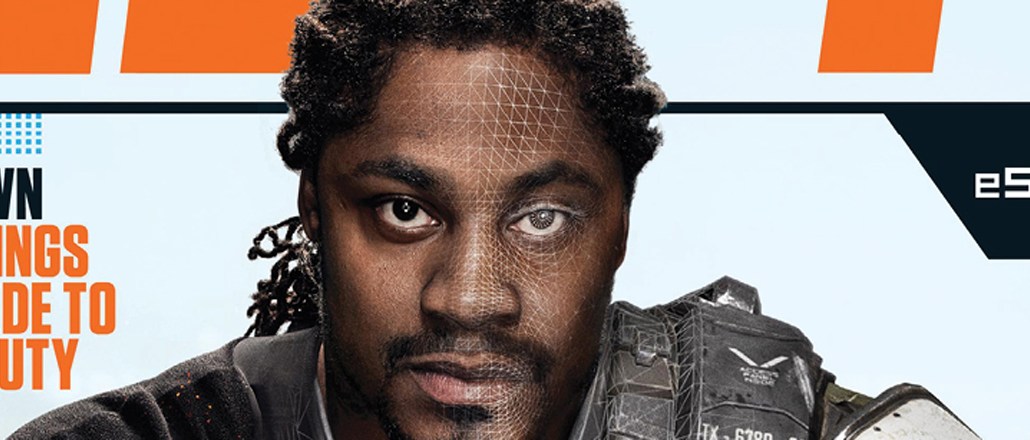
With Seahawks star Marshawn Lynch gracing its cover, the most recent issue of ESPN The Magazine looks like any other issue — with one major difference. It’s about e-sports.
The issue, the first of its kind for ESPN, digs into the rise of competitive gaming, with profiles of YouTube star PewDiePie and South Korea League of Legends prodigy Lee “Faker” Sang-hyeok, along with the gaming preferences of the NBA’s Kevin Durant and NFL’s Patrick Peterson. ESPN says that issue, which it hopes to put out annually, is a product of the realization that the rise of professional gaming is “the birth of a new sport.”
“E-sports is way past cult status at this point — if it’s not already the dominant cultural force of the moment, it’s pretty close to it,” ESPN The Magazine senior editor Megan Greenwell told ESPN’s FrontRow.
While mainstream sports outlets have traditionally turned up their noses at e-sports, competitive gaming is hardly a niche interest. Over 32 million people watched the broadcast of the League of Legends Season 3 World Championship in 2013 alone, for example. Game two of this year’s NBA Finals drew just 18.8 million viewers on ABC. Amazon-owned streaming site Twitch, which is dominated by coverage of competitive gaming, gets 100 million unique visitors a month.
E-sports, a catchall used to describe competitive video games — complete with star players, professional leagues and championships — is incredibly competitive. But for sports publishers, which are more at home covering mainstream sports than those that involve keyboards and mice, the e-sports story hasn’t been an easy one to tell.
“When you’re covering e-sports, the core thing you have to think about is who are you writing for,” said Kevin Morris, e-sports at The Daily Dot, which started its e-sports vertical in late 2013. “If you’re a mainstream publication, you need to make stories accessible, but making them accessible also means watering them down, which alienates the hard-core audience.”
ESPN isn’t totally new to e-sports, but it has a spotty track record with the games. Last year ESPN2 and ESPN3 broadcasted DOTA tournament The International, which had a $1 million prize. The stations followed that up this year with live broadcasts of the finals of Blizzard’s Heroes of the Dorm tournament. But both moves were controversial for ESPN’s audience, which reacted to the broadcast with equal parts confusion and revulsion. For many viewers, it was too much gaming coverage too soon. And it doesn’t help that ESPN’s own president doesn’t think that e-sports is actually a sport.
“Just like there’s still a bias in society toward gamers as basement-dwelling nerds, there’s still a bias with ESPN’s audience against competitive gaming,” Morris said. “But it’s a silly argument because ESPN also broadcasts spelling bees and poker.”
While e-sports hasn’t been easy for mainstream sports fans to wrap their heads around, publishers who have gone deep on e-sports coverage say that most of the story formats of mainstream sports carry over to e-sports coverage.The Daily Dot, which has three full-time e-sports writers, publishes 30-50 stories a week on topics that include player trades, game highlights and scandals in the industry. That coverage draws between 1.5 and 2.5 million unique pageviews per month, Morris said. The site is also bringing more of its coverage to video. Last year, along with YouTube network RoosterTeeth, it launched Leaderboard, an e-sports discussion show in the vein of shows like ESPN’s Sportscenter.
“It’s a no-brainer that we have to cover this stuff the same way we cover the NFL, MLB or soccer,” said Benjamin Levy, president and chief operating officer of The Score, which launched an e-sports-focused mobile app in March. “All these fans have the same kind of passion.”
More in Media

What publishers are wishing for this holiday season: End AI scraping and determine AI-powered audience value
Publishers want a fair, structured, regulated AI environment and they also want to define what the next decade of audience metrics looks like.

Media giant Essence launches a marketplace for Black women-led brands
Essence has launched WeLoveUs.shop, a new online marketplace dedicated to Black women-led brands.

In Graphic Detail: The state of AI referral traffic in 2025
The stats reveal a new audience pipeline forming outside of traditional search and social platforms.






